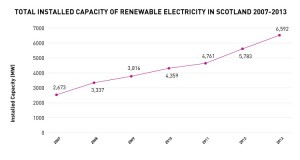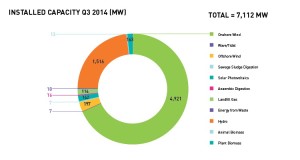I admit to be being concerned about global warming, its many impacts, present and future, on human welfare, and the insidious fact that those least responsible for global warming and the resultant climate change are likely to suffer the most serious impacts. I also admit to anger at my fellow humans, both scientific and political, who continue to deny the scientific basis for concern about global warming when the consensus among scientists is overwhelming, an unusual situation in science. It is a failure for which the deniers and minimizers should be held accountable.
In retrospect it is easy to reflect on human history and find examples where numbers of people, some highly educated and well respected, were wrong about important events and changes in society. Certainly many were sincere in their ultimately incorrect beliefs, based on limited available information and their life experiences and inevitable mental filters for processing that information. Others were undoubtedly self-serving opportunists who perhaps knew better but compromised their integrity. In this latter category I include those scientists and other well-informed people who denied the link between smoking and serious health effects, and more recently those who deny global warming or minimize its impacts. In my mind they are people who have sold their souls for filthy lucre.
What is so hard to understand about global warming? It is the same physical process that occurs in a car on a hot day that we all experience. The visible light rays from the sun, distributed in a spectrum determined by the sun’s surface temperature (about 5,500C) easily penetrate the car’s glass windows and are absorbed by the car’s interior which gets warm and often hot to the touch. These warm or hot surfaces then reradiate in a spectrum different from the sun’s radiative spectrum because of their vastly different surface temperatures. The basic physics is the same – Planck’s Law, first proposed in 1900, determines the spectral distribution and intensities of the radiation emitted by a black body at temperature T. In a car the reradiated heat from the interior surfaces is mostly in the infrared region which the glass is not as transparent to as it is to the visible radiation from the sun. This trapping of the reradiated heat causes the car’s interior temperature to rise until enough reradiated infrared radiation gets through the glass due to the interior’s now higher temperature to provide a balance between the energy of the incoming and outgoing radiation streams. This is exactly what happens in the earth’s atmosphere, with gases in the atmosphere playing the role of the glass windshield and determining the atmosphere’s transmission characteristics. Important global warming gases are CO2, largely from combustion of fossil fuels, and natural gas (methane), and a few others. The earth’s current temperatures, hospitable to life, reflect such an energy balance between the sun and the earth. Venus is an example of where the equilibrium temperature reached by the planet to achieve an energy balance with the sun is much higher.
This is a long introduction to my real purpose in this blog post, to share with you a recent statement on global warming that was forwarded to me by a colleague. I found it clearly written, insightful and powerful. Its author is Dr. David Vernon who has advanced degrees in mathematics and life sciences. He has had a long career in technical areas, and currently serves as a principal at Carbontech Global LLC. Carbontech’s mission is to turn “..organic waste streams into renewable energy streams..”
The statement follows:
“On Tue, Apr 28, 2015 at 2:57 PM, David Vernon
Global warming is not a theory. It is a measurement, known to the climate science community since 1900. Climate change as a result of global warming is a physical phenomenon. Certain air masses become weaker, others stronger, the circulation changes, the sea currents change, etc. It is just physics. The CO2 hypothesis was first presented in the 1920s by a Nobel-winning chemist, who proved that it was possible for increased atmospheric CO2, another actual physical measurement, to account for the increase in the average earth surface temperature. The amount of carbon required to double tropospheric CO2 from .04% to .08% is huge – there is no place for it to have come from except the burning of coal for 250 years. Until the advent of supercomputers in the 1980s, it was impossible to calculate the appropriate correlation statistics within a human lifetime, but by 1990 the math was done – the case is, as we say, proven. it is coal burning for energy that has warmed the globe, counteracting the ice-age cooling that is produced by orbital, rotational, and solar cycles, threatening our coastal settlements, our water supplies, and our agricultural production while increasing the severity and intensity of all storms. Scientists are now debating how bad this will get for us, how soon, and how this will ultimately affect the oncoming ice age.
This is not rocket science. The reason it took supercomputers was the volume of point data to be included in the calculations. The earth is about 8,000 miles thick, giving a surface are of more than 200 million square miles. Even one data point per square mile is unmanageably large. Furthermore, air movement is driven by pressure and temperature differences, which are in turn changed by air movement, so there are second order, third order, and higher order effects which must also be included in any mathematical analysis.
The issue is the inconvenience of the truth. The United States derives about 40% of its electricity from coal combustion. Several States, many companies, and thousands of Americans depend on this coal business for their livelihoods. This is not a problem in “right and wrong”. it is a problem in complex and conflicting human interests. It is wishful thinking to cope with an inconvenient truth by denying it. It is also human nature. However, we cannot command physics, or chemistry, or even biology, and we can barely control our own human behavior. Perhaps it is time to return to the meaning of republican government – we choose the smartest and least corruptible people to represent us, make these decisions for us, and counteract the pressure from short term interests for short term gains. Without life, money is just trash.”
I hope you find this statement as powerful as I did.
Note: this week marks the 2-year anniversary of this blog – my first blog post was published on May 29, 2013. I intend to keep blogging on this site, but perhaps less frequently than to date (93 posts in 104 weeks) as some of my energies are being diverted to writing a book on the energy transition from fossil fuels to renewables as seen by me since 1969. I hope to finish the book within the calendar year, but as I’ve learned from several book-writing friends it is not easy to gauge how long it will take. It will be a personal, not a technical, book – my views on the technical aspects of energy issues are well documented in this blog.



